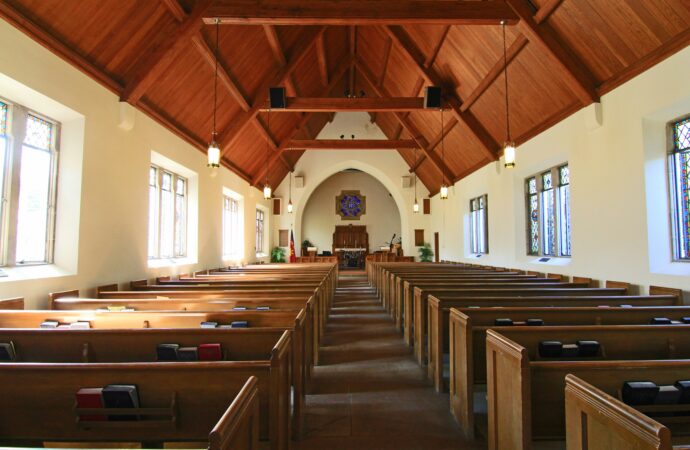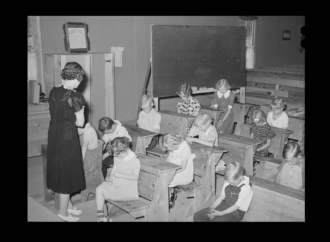“Does your mom let you wear jeans to church?”
So spoke a family friend who was babysitting me and my siblings many years ago when our parents were away for the weekend. I had come downstairs that Sunday morning wearing jeans, a sweater, and a scarf.
“Yes,” I said without hesitation. I thought her question was odd, and I was confused – partially because the jeans I was wearing were dark jeans, so I had mentally put them in the category of dress pants – but also because I couldn’t think of a reason not to wear jeans to church. I wondered whether the babysitter thought I was trying to get around my parents’ rules.
While my parents had no rule against denim or pants at church, in truth, I didn’t wear jeans to church very often because my sisters and I shared many nice dresses on our childhood Sundays. Occasionally, as on that particular Sunday, I did wear jeans with something dressy like a scarf. But I never wore shorts or t-shirts to church; surely my parents would not have permitted it, as they had taught me that church is not an occasion for casual clothes.
Growing up, my family understood that, as Solomon writes in Ecclesiastes 3:1, “There is a time for everything.” There is a time for athletic shorts, and there is a time for dresses. There is a time for t-shirts and hoodies, and there is a time for ties and button-downs. There is a time for all clothing, provided it falls within the bounds of modesty. But not every piece of clothing is appropriate for every time.
Put simply, this is the idea of “decorum.” Aristotle used the word in his “Poetics” to represent the principle that the style or form of a work ought to fit with its subject and audience. This principle extends beyond literature, however: the word “decorum” and its synonym “propriety” have long been used to describe the idea that people ought to present themselves in a manner fitting with the occasion of the time. In other words, the way we act – and dress – ought to fit with what we are doing and where we are.
Many churchgoers and even those who don’t attend no longer believe in decorum, or at least, they dress as if they do not. Decorum, like any “old-fashioned” concept, is considered oppressive because it dictates that the individual must submit to standards and social graces outside of himself.
In addition, many Christians have uncritically adopted trends and norms that are unhelpful even if not specifically “sinful.” Though it may not be morally wrong to wear casual clothing to church, the prevalence of casual dress only brings a more casual attitude into every venture. However, a casual attitude is not fitting at Sunday morning worship or a funeral or a formal dinner. Wearing a baseball hat to church makes church feel like a baseball game. Informal clothing inspires an informal attitude that grows ever more prevalent when it is adopted by a whole community, such as a church. A casual attitude in a sacred space, such as a church, tends to produce an irreverence for what is holy.
So, can we wear jeans to church? Is denim in church good decorum?
It depends. Jeans can be dressed-up, but many wear them in a casual way. Decorum requires another unpopular virtue: discretion.
Because styles and social standards are subject to change, there is no fixed rulebook for what to wear in any situation. There is no need to dress as if we lived in 11th-century Christendom or 19th-century America. Even so, we ought to look at 21st-century philosophies, values, and trends with discretion. For instance, the “athleisure” clothing that is so popular today blurs the difference between athletic wear and everyday clothing, normalizing leggings and sweatpants everywhere.
The way we dress affects the way we live our lives. All our habits, including habits of dress, shape who we are, implicitly revealing our values to the world. The practice of dressing decorously reveals, both to ourselves and to others, that we believe in an ordered universe where norms of respect and modesty keep the sacred separate from the casual.
—
This article was made possible by The Fred & Rheta Skelton Center for Cultural Renewal.
Image credit: Unsplash
















Leave a Comment
Your email address will not be published. Required fields are marked with *